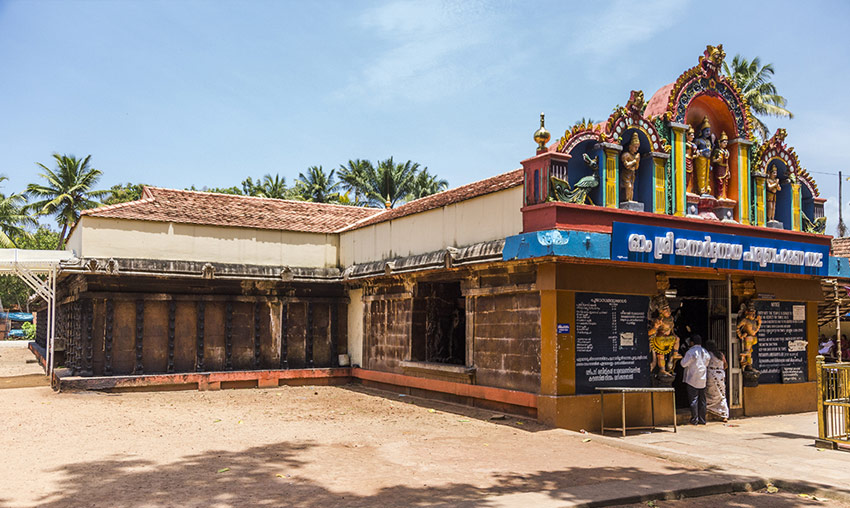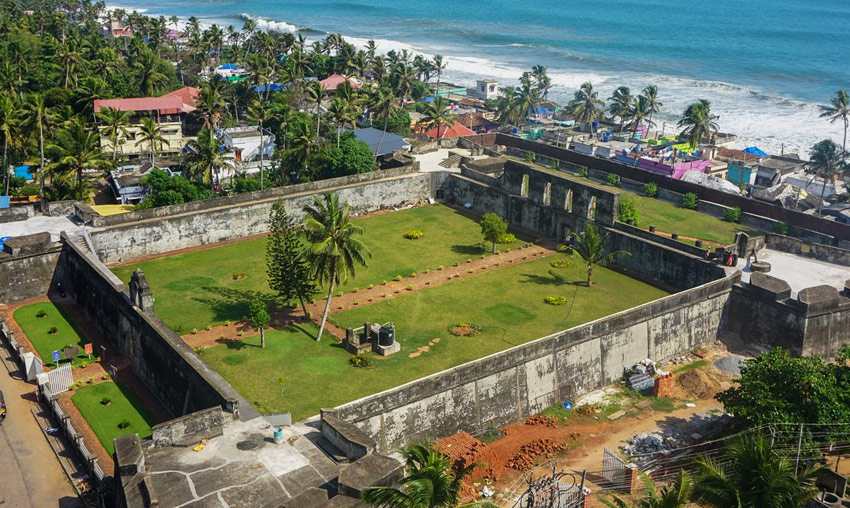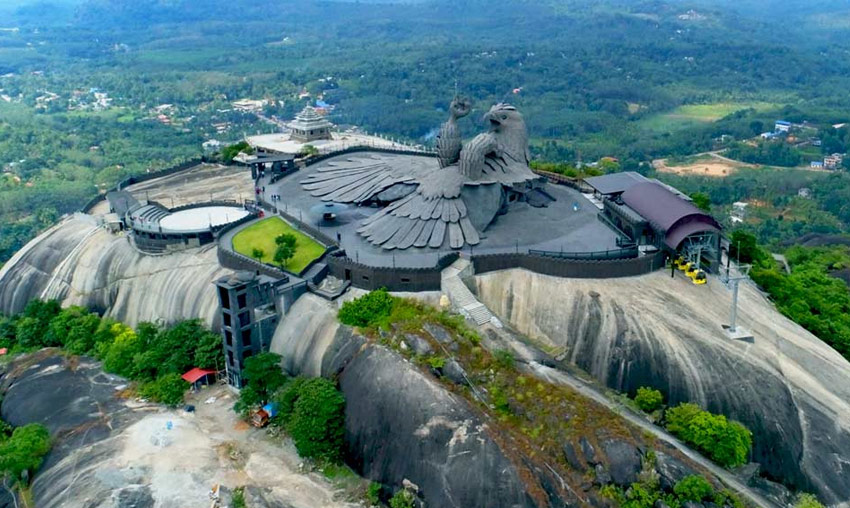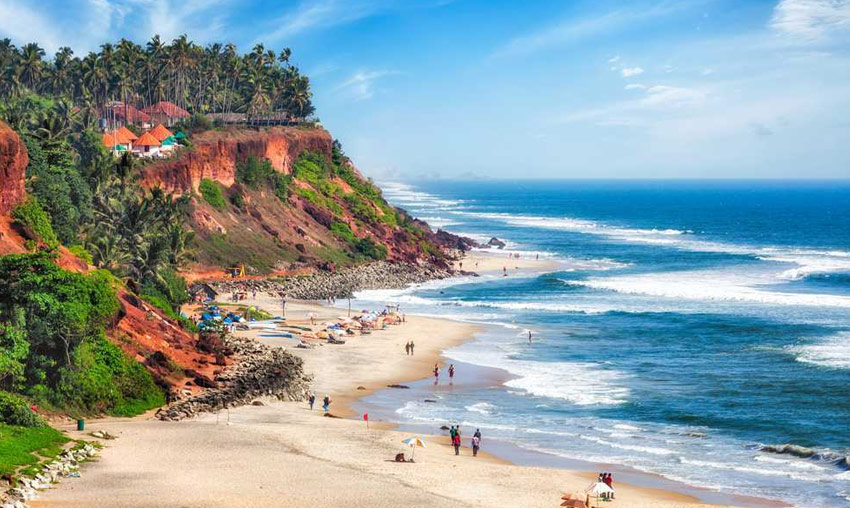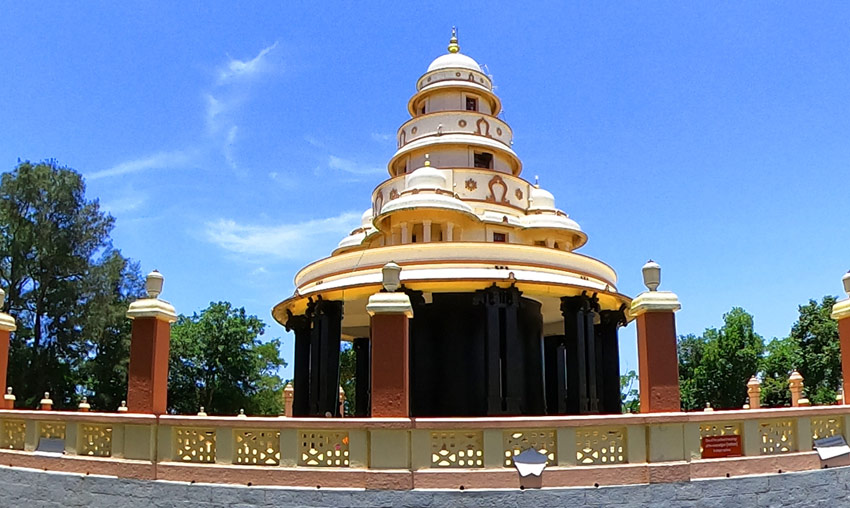Janardhana Swamy Temple, Varkala | History, Legends & Timing
Janardhanaswamy Temple is situated near Varkala, 25 kilometers north of Thiruvananthapuram. Thousands of followers attend the annual Arattu festival held at the temple, which is devoted to Lord Vishnu. It is an old temple that is two thousand years old. Since the 12th century, Varkala has been a Hindu pilgrimage place. Because the Janardhana Temple was constructed at this time, a large number of Hindus continue to visit the site today.
The Varkala sands are now a perfect place for different cultures to meet. Another important pilgrimage site in Kerala is located in Varkala. Southern Kasi (Benares) is the nickname given to the area by the temple atop the hill, which is devoted to Lord Vishnu and Hanuman. Non-Hindus are not permitted to enter the inner sanctum but can hang around the temple.
History Of Janardhanaswamy Temple, Varkala, Kerala
The Janardhana Swamy Temple is linked to numerous legends. The Lord Brahma legend is the most well-known. It is thought that Varkala was chosen as Lord Brahma’s Bhoomi (place of sacrifice) when he first came to earth to offer a sacrifice. He lost sight of his role as a creator because he was so consumed by his sacrifice. Knowing this, Lord Vishnu disguised himself as an elderly man and traveled to Varkala. He was provided food by the Brahmins, but nothing sated his hunger. After realizing this, Lord Brahma visited him. Then Lord Vishnu asked him to cease his sacrifice and resume his recreational duty. In order to honor this legend, the temple was constructed.
Thus, to experience the actual essence of Kerala, it is vital to witness a festival there, and there could be nothing better than the Arattu festival itself! It has been drawing an average of 10,000 visitors this season, and its magnificent architectural characteristics are deserving of praise. Worth a visit, the temple and the celebration reflect South Indian customs.
legends of Janardhanaswamy Temple, Varkala, Kerala
The temple’s beginnings and history are linked to a number of myths, legends, and folklore. The most well-known of these is the tale of Lord Brahma and Sage Narada. Lord Brahma once came to earth to offer a fire sacrifice, or Yaga. He decided that the current Varkala would be the Yaga bhoomi, or location for the sacrifice. This sacrifice is responsible for Varkala’s mineral waters and lignite striate. Brahma was so engrossed in the ceremony that he forgot his heavenly role as creator. After learning of this circumstance, Lord Vishnu traveled to Varkala to remind Lord Brahma of his obligation. Disguised as an elderly man, Lord Vishnu made his way into the Yagashala. The elderly man was welcomed and fed by the Brahmins who were helping Lord Brahma. But whatever he ate, his hunger was not satiated. Lord Brahma’s assistants went and told him about it. Realising that the old man is none other than Lord Vishnu Brahma came immediately to see him but was shocked to see Vishnu eating aabhojanam.
See More Places to visit Varkala
Arattu Festival in Janardhanaswamy Temple
The ten-day Arattu festival, one of Kerala’s most important celebrations, is held at the Janardhan Swamy temple and features kathakali dances all night long, elephant processions, and decorative silk umbrellas. The Arattu is not so much a temple feast as it is a ceremony. The celebrations of the Arattu are marked by a large parade, a ceremonial bath, and the offering of the sweet dessert palpayasam. In Kerala, it is observed twice a year, in March and April and in October and November.
About The Arattu Festival
Janardhana Swamy Temple hosts the Arattu Festival, showcasing the stunning and vivid hues of the area. It begins with Kodiyettu (flag hoisting) on Karthika Day of the Malayalam calendar and concludes with Arattu on Uthram Day, another auspicious day. The ten-day celebration is held during the month of Meenam (March–April).
The festival’s fourth and fifth days feature all-night performances, such as the Kathakali dance. The event concludes with a parade of five lavishly dressed elephants around the city. Beautiful fans and decorative silk umbrellas are used to embellish the elephants. On Uttaram Day, Lord Vishnu’s sacred bath, known as the Arattu, is held in the Arabian Sea, close to the temple.
Rituals at the Arattu Festival
The ten-day celebration comes to an end with Lord Vishnu’s ceremonial procession, known as Arattu. The ‘Pallivetta’ procession takes place inside the fort the night before the parade.
His Highness the Ex-Maharaja enters the temple on the day of Arattu. Following a few ceremonies, the procession departs through the eastern gate while being accompanied by nagaswaram, drums, and other instruments.
With a sword in his hand, His Highness leads the parade, which is accompanied by mounted police, army, and armed guards all the way to the Sanghumugham seashore. An elephant carrying a drum moves forward. According to ancient beliefs, the drum is struck to signal the presence of God.
With a 21-gun salute, the procession exits the gate at approximately 5:00 PM. When the procession reaches the sea, the ritual bath is taken.
Main Attraction at Arattu Festival
The Dutch Bell
The Dutch Bell, thought to have been cast in 1757, is one of the temple’s main draws. A Dutch sailor presented it as an oblation to the shrine. According to the legend, a Dutch ship passed the shrine and refused to move. From the temple, the captain heard a bell chime. If the Lord permitted his ship to go farther, he pledged to offer a bell in his ship as an oblation to the temple. A wind soon arrived, safely moving the ship. The caption came back and fulfilled his pledge.
